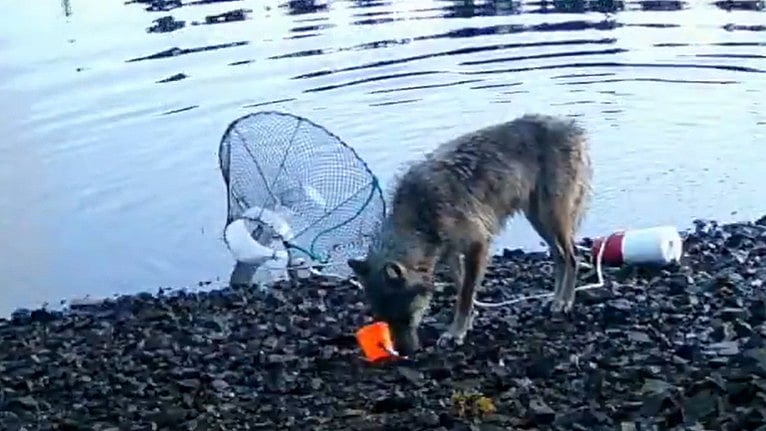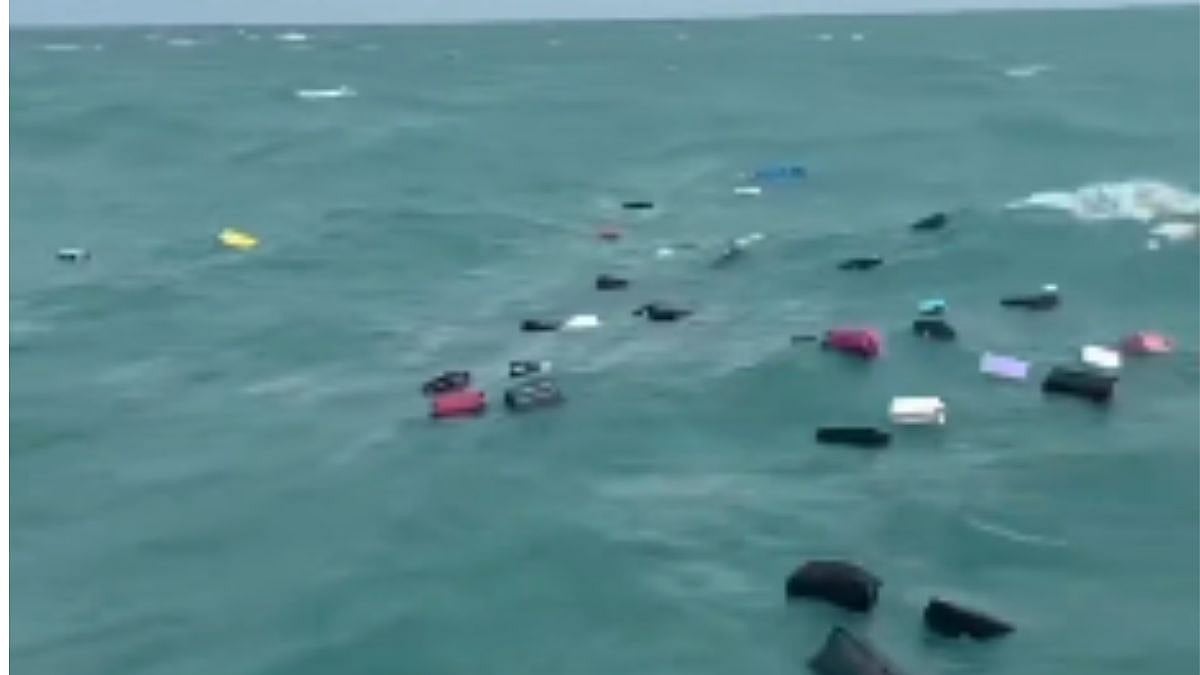In a groundbreaking discovery, scientists have captured a wild wolf using a crab trap to fish, marking what could be the first documented example of tool use by a wild wolf. The footage was recorded in May 2024 on the central coast of British Columbia, but the findings were published in November 2025.
According to the study conducted by researchers working with the Haíɫzaqv Nation, the trap in question was part of their efforts to control the invasive European green crab. The traps, metal frames covered in nets with bait cups containing crab and sea lion meat, had repeatedly been found damaged and empty, prompting investigators to suspect a marine animal. To identify the culprit, they set up a motion-triggered camera near one of the submerged traps.
WATCH VIDEO:
What the camera captured stunned experts: a female wolf emerged from the water carrying a buoy in her mouth. She dropped the buoy onshore, returned to the water, grabbed the rope attached to the trap, and steadily pulled it toward the beach. Once the trap surfaced, she dragged it ashore, tore open the netting, retrieved the bait cup, and feasted on its contents. The entire sequence took just minutes.
Researchers describe the behavior as 'carefully choreographed,' showing a clear understanding of cause and effect and a level of problem-solving never before observed in wild canids. "From the very first watch of the video, it was like — from my interpretation — this is tool use,” said ecologist Kyle Artelle, who co-authored the study.

Still, some scientists caution against jumping to conclusions. The debate centers on the definition of “tool use.” Traditional definitions often require that an animal not only manipulate an object but also fabricate or modify it for a specific purpose. Regardless of the classification, this astonishing behaviour expands our understanding of wolf intelligence and adaptability.








